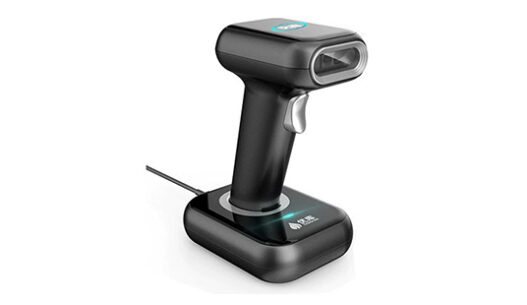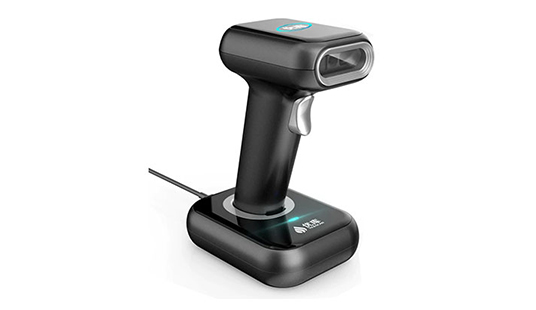Walk into any modern hospital and you’ll notice that nearly everything has a barcode—from patient wristbands to IV bags and lab samples. It’s not a coincidence. Barcode scanners have quietly become one of the most reliable tools in healthcare, improving accuracy, safety, and efficiency in ways that most patients never even notice.
Table of Contents
A Smarter Way to Keep Patients Safe
At the heart of every hospital’s barcode system is patient identification. When someone is admitted, they’re given a wristband with a unique barcode. That code connects directly to the hospital’s electronic health record system, making it easy for nurses and doctors to verify that they’re treating the right person.
Before a medication is given or a test is performed, staff scan the wristband to confirm that everything matches the patient’s chart. If something doesn’t line up—say, the wrong dosage or medication type—the scanner immediately alerts the nurse. It’s a simple safeguard that dramatically reduces the chance of human error.
This process has become so routine that many hospitals can’t imagine functioning without it. In emergency rooms, where patients often arrive without identification or paperwork, scanning makes it possible to track and verify information instantly. That single step can mean the difference between a fast, safe treatment and a potentially dangerous mistake.
The Role in Medication Accuracy
Medication errors used to be one of the most common problems in healthcare. Barcode medication administration has changed that. By scanning both the patient’s wristband and the medication label, hospitals ensure the “five rights” of medication administration: right patient, right drug, right dose, right route, and right time.
If there’s a mismatch, the system flags it instantly. It doesn’t matter how rushed the ward is or how many patients a nurse has—barcode scanners provide a quiet, reliable double-check before any drug is administered. For patients, that means peace of mind. For staff, it means fewer late-night incident reports and a lot less paperwork.
Keeping Track of Supplies
Hospitals run on supplies, and managing those supplies is no small task. From gloves and gauze to implants and surgical instruments, everything needs to be tracked accurately. Hospital barcode scanners simplify this by automatically updating the facility’s inventory system each time something is used.
This helps prevent stock shortages, eliminates unnecessary reorders, and cuts down on expired items sitting in storage. Some hospitals even link their barcode systems to purchasing software so new supplies are ordered automatically when inventory runs low. It’s not glamorous, but it saves time, money, and frustration.
Accuracy in the Lab
Laboratories depend on precision, and barcode scanners have become central to maintaining that precision. When a blood sample or tissue specimen is collected, it’s immediately labeled with a barcode. That label stays with the sample through every stage of testing.
Each time it moves—from collection to analysis to storage—a technician scans the barcode and data is entered into the laboratory information system. This ensures that the results are correctly matched to the patient’s record. It also means fewer mix-ups, less manual data entry, and faster results overall. For patients waiting on important test outcomes, that speed can make a big difference.
Surgical Safety and Traceability
Operating rooms rely on organization and accountability. Before surgery, every instrument and implant used in a procedure can be scanned to confirm it’s sterile and appropriate for that particular case. Afterward, those same items are scanned again to log their use, track maintenance schedules, and record which patient they were used on.
In the event of a recall or equipment issue, barcode tracking makes it easy to trace specific products back to their use. It’s a level of precision that adds another layer of safety for patients and clarity for hospital staff.
Simplifying Admissions and Discharges
Admissions and discharges are two of the busiest times in any hospital. Barcode scanning helps reduce the chaos by automating parts of the process. A quick scan of a wristband or ID instantly pulls up a patient’s record, room assignment, and billing information.
At discharge, barcodes help verify that all treatments have been documented, medications are correct, and the final paperwork is complete. It means fewer delays, smoother transitions, and a better experience for both patients and staff.
Blood Transfusions Without Guesswork
Few medical procedures require as much precision as a blood transfusion. Barcode scanners make sure that every unit of blood matches the patient’s blood type before transfusion. The moment a barcode is scanned, the system checks for compatibility. If anything is off, the transfusion won’t proceed until it’s corrected.
That same tracking continues through the entire process—from donor collection to storage to transfusion—creating a complete record that can be reviewed later if needed. This simple tool has helped nearly eliminate transfusion-related errors in hospitals that use it consistently.
Less Paperwork, More Care
Every scan feeds information directly into the hospital’s electronic health record system. Nurses and doctors no longer have to spend valuable time writing down every detail by hand. The information is logged automatically, creating a digital trail that’s easy to review later.
That doesn’t just save time—it helps medical teams make better decisions. When everyone has access to real-time, accurate data, there’s less confusion, fewer duplicate tests, and more coordinated care.
Tracking Equipment and Maintenance
Hospitals are filled with expensive, often specialized equipment. Barcode scanners make managing that equipment far easier. Each piece of machinery can be tagged with a barcode that includes information about when it was purchased, when it was last serviced, and where it’s currently located.
Instead of searching hallways for missing wheelchairs or infusion pumps, staff can scan and locate them instantly. This helps keep departments organized and ensures that critical tools are always available when needed.
Behind the Scenes: Better Administration
While barcode systems are designed to make clinical work easier, they’ve also improved the administrative side of healthcare. Every scan contributes to accurate billing, supply tracking, and insurance claims. Because everything is automatically recorded, the risk of missing charges or misfiled information drops significantly.
Audits become less stressful too. Hospitals can show detailed records of every medication, device, and service linked to a patient’s barcode. The transparency helps maintain compliance with healthcare regulations and builds trust with patients who expect accountability from their care providers.
The Bigger Picture
What makes barcode scanners so powerful isn’t just the technology itself—it’s the consistency they bring to hospital operations. They take repetitive, error-prone tasks and make them predictable, efficient, and verifiable. Every scan represents a moment where something could have gone wrong but didn’t.
As healthcare becomes more digital, barcode systems are being integrated with advanced tools like RFID and artificial intelligence. Together, these technologies are helping hospitals understand patterns in medication use, patient flow, and inventory management. The data collected through everyday scanning can guide larger decisions about staffing, purchasing, and patient care strategies.
A Quiet Revolution in Healthcare
Barcode scanners rarely make headlines, but they’ve become one of the most valuable tools in modern medicine. They save time, reduce mistakes, and help hospitals deliver care that’s faster, safer, and more efficient. For patients, that means fewer errors and better outcomes. For healthcare workers, it means less time wrestling with paperwork and more time focused on healing.
Hospitals are full of cutting-edge technology, but sometimes the most impactful innovations are also the simplest. A barcode and a quick scan may not look like much—but in today’s hospitals, they’re helping save lives every single day.






